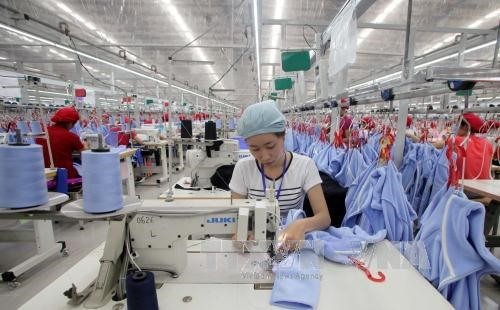
A 6.5 per cent increase in the regional minimum wage for 2018 had been decided in August this year by the National Wage Council and submitted to the Government for final approval.
Amounting to an increase of VND180,000-230,000 (US$8-10) a month, it was said to be the lowest wage increase ever in the country.
However, at a conference on the effects of wage and social insurance policies on textile enterprises in Hà Nội yesterday, VITAS proposed that there be no increase in the minimum wage in the next one or two years, since several enterprises are already struggling with wage increases in the last decade.
In the 2007-2017 period, minimum wage in domestic enterprises increased by 21.8 per cent, leading many enterprises to reduce workers’ bonuses every year and use machines instead of labourers, said VITAS.
Trương Văn Cẩm, vice chairman of VITAS, said that increasing the regional minimum wage does not ensure increases in workers’ living standards because “wage increases often drag along increases in commodity prices and increases in the cost-of-living.
“Moreover, constantly increasing minimum wage reduces competition and shifts the labour structure, preventing enterprises from expanding production and robbing labourers of job opportunities,” he said.
Social insurance premiums also increase when minimum wages increase. For the Hưng Yên Garments Corporation with 15,000 workers, the increase in social insurance premiums would go up by VND18 billion ($792,000) per year, said Chairman Nguyễn Xuân Dương.
“Five out of our 14 member enterprises are already struggling. It will be hard for us to stay in business if the minimum wage keeps increasing.” Dương said. “In fact, several textile enterprises in our Hưng Yên Province have closed down.”
Apart from the minimum wage, VITAS has also proposed that adjustments be made soon to address what it seems as drawbacks in Labour Code 2012, which covers overtime, severance pay, unemployment benefits, health and occupational safety and labour discipline, source from Vietnamnews.
























